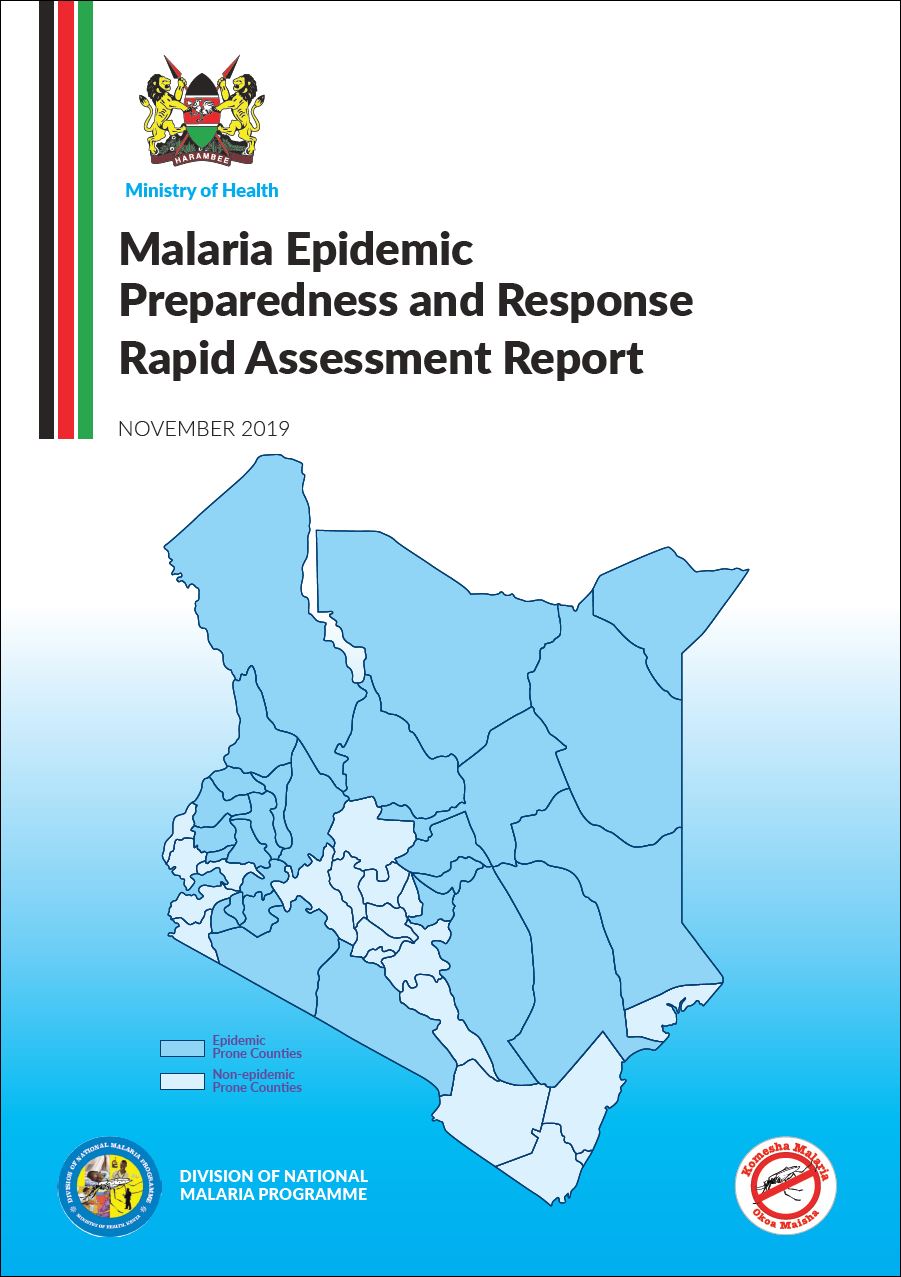Malaria Epidemic Preparedness and Response Rapid Assessment Report
Download Document:
EPR-Rapid-Assessment-Report-Final-Signed.pdf (2 MB)
EPR-Rapid-Assessment-Report-Final-Signed.pdf (2 MB)

Abstract: Malaria epidemics usually occur in the western highlands and the arid and semi-arid regions of Kenya. These epidemics
are characterised by high morbidity and mortality. Malaria epidemic preparedness and response (EPR) is geared towards
the reduction of morbidity and mortality during epidemics through timely detection and response. A malaria programme
review conducted in 2018 revealed suboptimal performance on EPR indicators and activities. Thus, the Division of
National Malaria Programme (DNMP)—with support from the United States Agency for International Development
(USAID)- and the U.S. President’s Malaria Initiative (PMI)-funded MEASURE Evaluation project—conducted malaria
EPR planning and review workshops for 127 sub-counties in 26 epidemic-prone counties in Kenya. The workshops were
conducted between January and March 2019 to build the capacity of health managers to set thresholds to monitor and
detect epidemics early and initiate appropriate responses. Rapid assessment visits were conducted in November 2019 to
assess the level of preparedness and response to malaria epidemics in the counties and sub-counties trained. Ten of the
counties trained were randomly selected for the rapid assessment.
A rapid assessment tool was developed through a consultative process involving the DNMP, the Division of Disease
Surveillance and Response (DDSR), and MEASURE Evaluation. The tool assessed the level of preparedness and response
to malaria epidemics in the counties and subcounties selected. The objectives of the rapid assessment were to assess
vulnerability to malaria epidemics in the selected counties and establish the level of preparedness and readiness of counties
and sub-counties to respond to detected outbreaks and their resource needs to respond to potential epidemics.
This report details the assessment and results.
are characterised by high morbidity and mortality. Malaria epidemic preparedness and response (EPR) is geared towards
the reduction of morbidity and mortality during epidemics through timely detection and response. A malaria programme
review conducted in 2018 revealed suboptimal performance on EPR indicators and activities. Thus, the Division of
National Malaria Programme (DNMP)—with support from the United States Agency for International Development
(USAID)- and the U.S. President’s Malaria Initiative (PMI)-funded MEASURE Evaluation project—conducted malaria
EPR planning and review workshops for 127 sub-counties in 26 epidemic-prone counties in Kenya. The workshops were
conducted between January and March 2019 to build the capacity of health managers to set thresholds to monitor and
detect epidemics early and initiate appropriate responses. Rapid assessment visits were conducted in November 2019 to
assess the level of preparedness and response to malaria epidemics in the counties and sub-counties trained. Ten of the
counties trained were randomly selected for the rapid assessment.
A rapid assessment tool was developed through a consultative process involving the DNMP, the Division of Disease
Surveillance and Response (DDSR), and MEASURE Evaluation. The tool assessed the level of preparedness and response
to malaria epidemics in the counties and subcounties selected. The objectives of the rapid assessment were to assess
vulnerability to malaria epidemics in the selected counties and establish the level of preparedness and readiness of counties
and sub-counties to respond to detected outbreaks and their resource needs to respond to potential epidemics.
This report details the assessment and results.
Author(s): Kenya Ministry of Health
Year: 2020
Language: English